Related Research Articles

Las Meninas is a 1656 painting in the Museo del Prado in Madrid, by Diego Velázquez, the leading artist of the Spanish Baroque. It has become one of the most widely analyzed works in Western painting for the way its complex and enigmatic composition raises questions about reality and illusion, and for the uncertain relationship it creates between the viewer and the figures depicted.

Elaine Marie Catherine de Kooning was an Abstract Expressionist and Figurative Expressionist painter in the post-World War II era. She wrote extensively on the art of the period and was an editorial associate for Art News magazine.

A portrait miniature is a miniature portrait painting, usually executed in gouache, watercolor, or enamel. Portrait miniatures developed out of the techniques of the miniatures in illuminated manuscripts, and were popular among 16th-century elites, mainly in England and France, and spread across the rest of Europe from the middle of the 18th century, remaining highly popular until the development of daguerreotypes and photography in the mid-19th century. They were usually intimate gifts given within the family, or by hopeful males in courtship, but some rulers, such as James I of England, gave large numbers as diplomatic or political gifts. They were especially likely to be painted when a family member was going to be absent for significant periods, whether a husband or son going to war or emigrating, or a daughter getting married.

Alice Neel was an American visual artist, who was known for her portraits depicting friends, family, lovers, poets, artists, and strangers. Her career spanned from the 1920s to 1980s. Her paintings have an expressionistic use of line and color, psychological acumen, and emotional intensity. She pursued a career as a figurative painter during a period when abstraction was favored, and she did not begin to gain critical praise for her work until the 1960s.
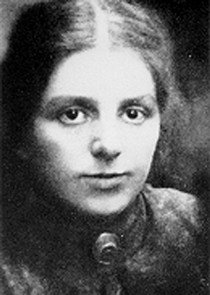
Paula Modersohn-Becker was a German Expressionist painter of the late 19th and early 20th century. She is noted for the many self-portraits the artist produced, including nude self-portraits. She is considered one of the most important representatives of early expressionism, producing more than 700 paintings and over 1000 drawings during her active painting life. She is recognized both as the first known woman painter to paint nude self-portraits, and the first woman to have a museum devoted exclusively to her art. Additionally, she is considered to be the first woman artist to depict herself both pregnant and nude and pregnant.

Sophie Gengembre Anderson was a French-born British Victorian painter who was also active in America for extended periods. She specialised in genre paintings of children and women, typically in rural settings. She began her career as a lithographer and painter of portraits, collaborating with Walter Anderson on portraits of American Episcopal bishops. Her work, Elaine, was the first public collection purchase of a woman artist. Her painting No Walk Today was purchased for more than £1 million.

Ellen Day Hale was an American Impressionist painter and printmaker from Boston. She studied art in Paris and during her adult life lived in Paris, London and Boston. She exhibited at the Paris Salon and the Royal Academy of Arts. Hale wrote the book History of Art: A Study of the Lives of Leonardo, Michelangelo, Raphael, Titian, and Albrecht Dürer and mentored the next generation of New England female artists, paving the way for widespread acceptance of female artists.
Eileen Cooper is a British artist, known primarily as a painter and printmaker.

Portrait of Adele Bloch-Bauer I is an oil painting on canvas, with gold leaf, by Gustav Klimt, completed between 1903 and 1907. The portrait was commissioned by the sitter's husband, Ferdinand Bloch-Bauer, a Viennese and Jewish banker and sugar producer. The painting was stolen by the Nazis in 1941 and displayed at the Österreichische Galerie Belvedere. The portrait is the final and most fully representative work of Klimt's golden phase. It was the first of two depictions of Adele by Klimt—the second was completed in 1912; these were two of several works by the artist that the family owned.
Chantal Joffe is an American-born English artist based in London. Her often large-scale paintings generally depict women and children. In 2006, she received the prestigious Charles Wollaston Award from the Royal Academy.
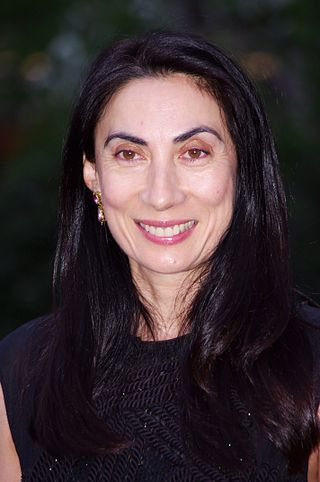
Anh Duong is a French-American artist, actress, and model. She is known for her self-portraits, which she has compared to a visual diary, as well as portraits of significant art collectors and influencers.
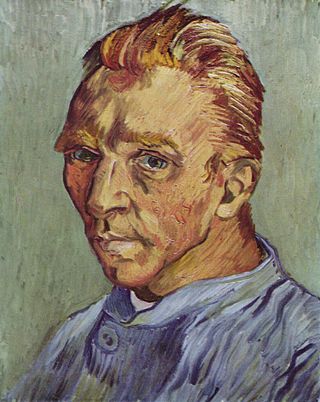
A self-portrait is a portrait of an artist made by themselves. Although self-portraits have been made since the earliest times, it is not until the Early Renaissance in the mid-15th century that artists can be frequently identified depicting themselves as either the main subject, or as important characters in their work. With better and cheaper mirrors, and the advent of the panel portrait, many painters, sculptors and printmakers tried some form of self-portraiture. Portrait of a Man in a Turban by Jan van Eyck of 1433 may well be the earliest known panel self-portrait. He painted a separate portrait of his wife, and he belonged to the social group that had begun to commission portraits, already more common among wealthy Netherlanders than south of the Alps. The genre is venerable, but not until the Renaissance, with increased wealth and interest in the individual as a subject, did it become truly popular.
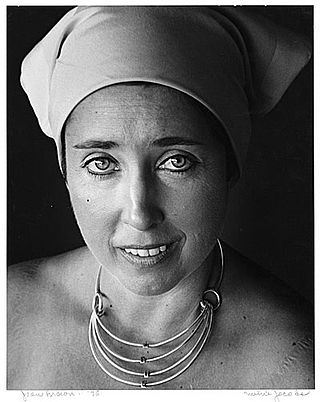
Joan Brown was an American figurative painter who lived and worked in Northern California. She was a member of the "second generation" of the Bay Area Figurative Movement.
Mequitta Ahuja is a contemporary American feminist painter of African American and South Asian descent who lives in Baltimore, Maryland. Ahuja creates works of self-portraiture that combine themes of myth and legend with personal identity.

Beverly McIver is a contemporary artist, mostly known for her self-portraits, who was born and raised in Greensboro, NC. She is currently the Esbenshade Professor of the Practice of Art, Art History and Visual Studies at Duke University.

Self-Portrait with Two Pupils, Marie-Gabrielle Capet and Marie Marguerite Carreaux de Rosemond is a 1785 self-portrait painting by Adélaïde Labille-Guiard depicting the artist with two of her pupils, Marie-Gabrielle Capet and Marie-Marguerite Carreaux de Rosemond. It is in the collection of the Metropolitan Museum of Art.
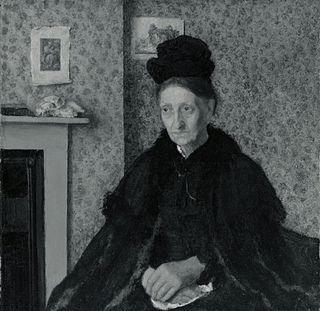
Mrs. Atkinson is a painting (portrait) by Gwen John. It is in the collection of the Metropolitan Museum of Art.
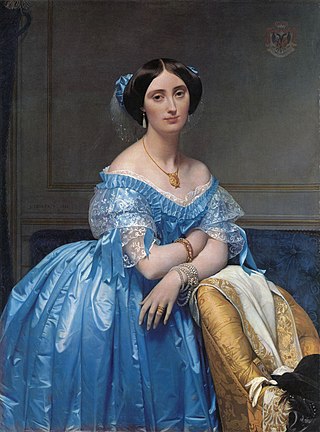
The Princesse de Broglie is an oil-on-canvas painting by the French Neoclassical artist Jean-Auguste-Dominique Ingres. It was painted between 1851 and 1853, and shows Pauline de Broglie, who adopted the courtesy title 'Princesse'. Born Pauline de Galard de Brassac de Béarn, she married Albert de Broglie, the future 28th Prime Minister of France, in 1845. Pauline was 28 at the time of the painting's completion. She was highly intelligent and widely known for her beauty, but she suffered from profound shyness and the painting captures her melancholia. Pauline contracted tuberculosis in her early 30s and died in 1860 aged 35. Although Albert lived until 1901, he was heartbroken and did not remarry.

The Lady of Shalott Looking at Lancelot is an oil-on-canvas painting by John William Waterhouse, completed in 1894. It measures 142.2 by 86.3 centimetres. The artist presented it to Leeds Art Gallery in 1895.
References
- 1 2 3 4 "Artists – Diane Ibbotson". University of Warwick Art Collection. University of Warwick. Archived from the original on 20 September 2021. Retrieved 4 March 2017.
- ↑ "Diane Ibbotson". Cornwall Artists Index. Archived from the original on 10 June 2023. Retrieved 4 March 2017.
- 1 2 Field, Robin (2008). "Diane Ibbotson: studio-visit". artcornwall.org. Archived from the original on 2 July 2022. Retrieved 4 March 2017.
- 1 2 "Diane Ibbotson - Here I Am - Artist Comments". University of Warwick Art Collection. University of Warwick. Archived from the original on 27 February 2021. Retrieved 4 March 2017.
- ↑ "Here I Am by Diane Ibbotson". University of Warwick Art Collection. University of Warwick. Archived from the original on 23 September 2021. Retrieved 14 March 2017.
- 1 2 "Self Portrait in Best Dress' by Diane Ibbotson". University of Warwick Art Collection. University of Warwick. Archived from the original on 7 March 2023. Retrieved 4 March 2017.